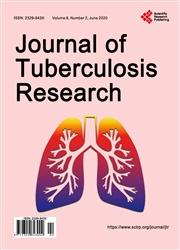Implementing TB Surveillance in Nigeria: Best Practices, Challenges and Lessons Learnt
引用次数: 4
Abstract
Introduction: TB Surveillance is a critical component of the global TB response. Comprehensive, accurate and timely information on TB is crucial for an effective TB control program hence the need for a robust tuberculosis surveillance system in all countries that contribute to the global burden of TB including Nigeria. Against this backdrop, an intervention was set in motion to triangulate the information from the health data reporting systems towards improving the overall surveillance system for TB in the country. Objectives: This article highlights the best practices, lessons learnt and challenges associated with the implementation of TB surveillance in Nigeria. In resource-limited settings such as Nigeria where health systems including health information management are sub-optimal, there is a heavy reliance on national and sub-national TB surveillance systems. TB data is mainly reported through the National Tuberculosis Control, however the integrated disease surveillance and response (IDSR) system also provides a platform for TB data collation through the LGA and State disease surveillance and notification officers. Conclusion: Implementing TB surveillance in Nigeria brought to fore the need for a wider engagement of all health facilities in TB control. As a dividend of the TB surveillance intervention, quality of care was improved in the private health sector through effective linkages to the commodity management system of the NTP and the national treatment guidelines. Strengthening community health surveillance system was identified as a critical element of Tuberculosis control. Also, the efficiency birthed by the integration of TB surveillance into the IDSR structure opened up other potential opportunities such as a unified capacity building of community informants on all notifiable diseases and the integration of reporting and risk communication for all health issues at the community level.在尼日利亚实施结核病监测:最佳做法、挑战和经验教训
导言:结核病监测是全球结核病应对工作的关键组成部分。全面、准确和及时的结核病信息对于有效的结核病控制规划至关重要,因此需要在造成全球结核病负担的所有国家(包括尼日利亚)建立强有力的结核病监测系统。在此背景下,启动了一项干预措施,对来自卫生数据报告系统的信息进行三角测量,以改善该国的结核病总体监测系统。目的:本文重点介绍了在尼日利亚实施结核病监测的最佳做法、经验教训和挑战。在尼日利亚等资源有限的环境中,包括卫生信息管理在内的卫生系统不够理想,因此严重依赖国家和地方结核病监测系统。结核病数据主要通过国家结核病控制报告,但综合疾病监测和反应系统也通过地方政府和州疾病监测和通报官员提供结核病数据整理平台。结论:在尼日利亚实施结核病监测凸显了所有卫生机构更广泛参与结核病控制的必要性。作为结核病监测干预措施的红利,通过与国家结核控制规划的商品管理系统和国家治疗指南的有效联系,私营卫生部门的护理质量得到了改善。加强社区卫生监测系统被确定为结核病控制的一个关键因素。此外,将结核病监测纳入IDSR结构所带来的效率开辟了其他潜在机会,例如对所有应通报疾病的社区举报人进行统一的能力建设,以及在社区一级将所有卫生问题的报告和风险通报结合起来。
本文章由计算机程序翻译,如有差异,请以英文原文为准。
求助全文
约1分钟内获得全文
求助全文

 求助内容:
求助内容: 应助结果提醒方式:
应助结果提醒方式:


